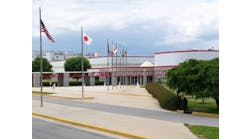Exclusive: 3 Top Issues Tire Dealers Should Track in 2022
From surprise acquisitions to supply chain, pricing and labor challenges, 2021 delivered plenty of punches. Industry analyst John Healy has tracked them all and has insights for tire dealers of what issues will be the most important to monitor in the months ahead.
Healy — who tracks the domestic tire industry for Northcoast Research Holdings LLC and also writes MTD’s monthly Your Marketplace column —will cover all the details in a series of articles. This is the first of five parts.
Future pieces will cover pricing actions and tariffs, mergers and acquisitions, the state of the Goodyear-Cooper deal, and how outside factors such as the new and used car markets will continue to affect the tire industry.
MTD: What are the three most critical things independent tire dealers should monitor and prepare for as 2022 begins?
Healy: From our seat, there are always pillars of the business that should be focus areas — those pillars being service, the customer and good product. But to answer your question in a more direct way, we would highlight three focus areas for dealers large or small — one, technician retention; two, access to product/inventory; and three, e-commerce initiatives.
The consensus view among dealers we spoke with in 2021 has been that the technician shortage is the biggest pain point. While labor shortages seem to be occurring in almost every industry, the shortages facing tire and auto care centers seem significant.
Over the last 12 months, we have regularly heard from dealers that finding techs and keeping staff is the most difficult and stressful part of the business. The days of hearing dealers wonder about where demand will come from appear to have been replaced with wondering whether they will have staff to meet the demand on a weekly basis. It does not appear uncommon these days for strong operators to have to close locations on weekends or operate with truncated hours due to a lack of available labor.
Simply put, the industry needs techs to keep up with demand and any dealership that hopes to do more business in 2022 should have a plan to staff up and retain their talent.
Outside of keeping and finding techs, making sure your access to product and inventory is well-established and in good order would be an area of prioritization. Tight industry inventories and elevated lead times to get product into the country and/or channel are not something that we think is going to be fixed in the short run.
Given these sourcing complexities, as well as what appears to be a rising cost environment, we think keeping a good stockpile of product and flexibility in sourcing would be essential to meeting demand and likely making decent margins.
While we are not in the forecasting business of commodities, there continues to be speculation that there could even be a shortage of natural rubber developing in 2022 or 2023 due to rising global demand and unique weather items that have impacted growing conditions. We think keeping a close eye on sourcing and inventory would be wise in 2022.
Outside of these traditional operational items, we would encourage dealers to invest in e-commerce. We view the digitization of most industries as accelerated by a rate of five to 10 years as a by-product of the pandemic. We estimate that about 5% to 10% of the U.S. replacement tire market is being purchased via the web. That said, roughly 80% of tire buyers are (only) doing research on what to buy and what it should cost. At some point, we see this purchasing process as shifting to where the web is capturing a much greater share of wallet than the current 5% to 10% rate.
While we think this will take many years for the shift in purchasing behavior to evolve, we do think waiting to have an online presence is an unwise decision. We think reaching customers via social media, (and customers) having the ability to book appointments online and search for product and price online are all (imperatives) for dealers who are looking to grow their business in 2022.
MTD: Tire dealers tell us they would sell more tires if they could just get them. When can they expect to see relief as it pertains to current shipping and supply chain challenges?
Healy: We don’t see it happening in 2022. The initial cause of supply chain pressure was a result of both demand and supply pressures caused by COVID-19. On the demand side, consumers spent more of their earnings/stimulus money on goods rather than services/experiences, causing an increased amount of shipping needs, given the interconnected global economy.
On the supply side, there are a slew of factors that still are working themselves out, including labor shortages, limited unloading capacity at ports and limited warehouse space. These items have resulted in shipping costs that are in many cases five times what they were a year ago.
Additionally, once product has arrived in the United States, transportation issues continue, given the ongoing trucker shortage, which has been a long-term and persistent issue.
In terms of when issues will be resolved completely, this is likely a multi-year process, given the constraints at play. Demand remaining robust will continue to be a drag on shipping times, given the increased volume of goods without the expanded capacity to accommodate the increase in volumes being transacted. Investments into expanding capacity will be needed to provide a longer-term solution in terms of unloading product and increasing warehousing space at ports, while shorter-term labor dynamics can largely be resolved through more competitive pay. That said, costs passed onto customers will likely help demand moderate and loosen supply chain stress.
Specifically, as it relates to tires, we see the semiconductor chip shortage, which has created complexities for the industry, being resolved.
We note that several vehicle manufacturers have repurposed manufacturing capacity to the replacement market from original equipment as vehicle production has been idled. We see this reversing in 2022 and as such, fewer tires likely produced on the replacement side compared to 2021.
While miles driven will ultimately dictate the demand side of things, we see this manufacturing realignment as creating a potential supply/demand imbalance that might not be cured until 2023.
What's Ahead for Tire Pricing and Tariffs





